Last Updated on May 7, 2023
Many drivers aspire to take the car from street-legal to an off-roader, but do you know what it takes? Installing a lift kit enables vehicle customization and more adventuring options. Even though reversing the process may be possible, removing the lift can be hard as there’s a lot more to it than meets the eye.
With numerous potential obstacles, from complex modifications that are hard to undo to bothersome components that resist extraction. There’s no telling what you might be met with when trying to put things back in their original state.
Before you start unhooking those suspension systems, learn why removing one can be tricky. Plus, some key considerations for successful de-lifting.
Is It Hard to Remove a Lift Kit: Reasons Why
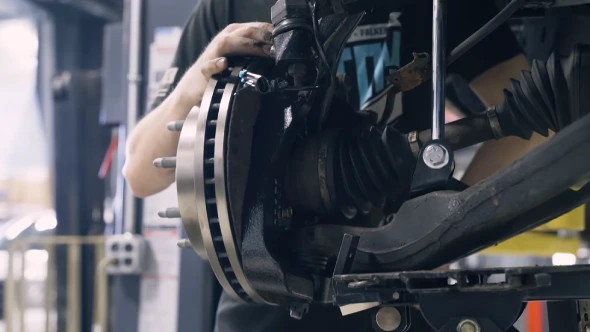
Removing a lift kit is not without its challenges. Reversing modifications, restoring the vehicle to factory specs, and unforeseen obstacles can all complicate matters. Let’s dive deeper and explore the complexities of these particular factors that hinder successful removal.
Difficulty In Reversing Modifications
Installing a lift kit often involves changing multiple car parts, including suspension components, drivetrain systems, tires, and other components. When you try to reverse these modifications during removal, you may have difficulty locating the original components or be unsure how to undo the changes.
Moreover, these difficulties can often be compounded by the costs associated with buying new replacement parts if necessary.
Inability to Return Vehicle to Manufacturer Specifications
Another challenge with removing lift kits is that your vehicle may not be able to return back to its original manufacturer specifications after the installation. This could be due to various factors such as improperly fitted or sized components during installation or damage caused by lifting itself.
Which has weakened certain areas of the frame or other parts. In this case, additional modifications may be necessary before you can use your car again in its original form.
Unforeseen Difficulties During Removal
Even when you have all the tools and resources necessary for properly removing a lift kit from your car, there are still potential unforeseen difficulties you will encounter along the way. For example, some parts may become damaged or corroded during the removal process, making them more difficult to remove.
Also, it’s possible that other parts of your car could get damaged while trying to gain access to installing or removing components related to the lift kit installation.
Trouble Diagnosing Problems After Removal
Even after successfully removing the leveling kit from your vehicle, diagnosing problems can still be difficult. There could be damage to your car from the things that were done during installation or from when it was removed.
For example, rust or corrosion damage from moisture buildup on certain components that were exposed during installation in an elevated position. Or incorrect suspension component alignment after the installation has been completed, which could cause uneven tire wear if left unattended for too long.
Potential Issues of Removing Lifting Components
Once you’ve removed the suspension parts from your car, it’s essential to inspect them for damage before trying to put them back on. These parts are usually heavier than regular suspension parts, so more force was used when installed.
This could have damaged them beyond repair. They’re also harder to remove once they’ve been screwed down tightly into place because of their weight and size, so extra caution must be taken when attempting the removal of these components.
Otherwise, you might end up causing more damage than intended which will add additional cost and time to completing this task successfully.
Considerations When Removing a Lift Kit
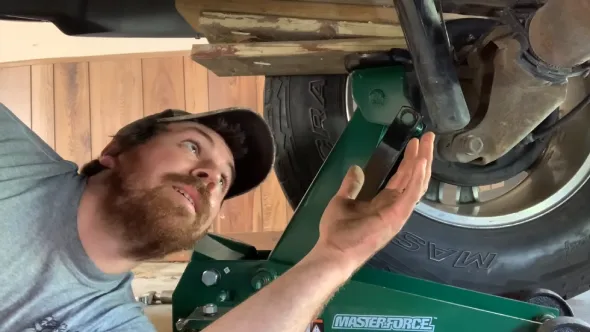
Removing an outdated lift kit or exploring something new requires some thought beforehand. Make sure you take the time to weigh your options and consider all angles before taking off in a different direction.
Take into account the following before removing a lift kit:
Understand Your Vehicle: Before attempting any type of suspension modification, ensure you understand your vehicle’s specifications and how it will react to changes in its suspension setup. So that you’re prepared for any issues that may arise during the process of removing your lift kit.
Choose the Right Tools: When removing a lift kit, having the right tools is key for doing the job safely and efficiently. You’ll need some basic hand tools like ratchets and wrenches as well as specialized tools like spring compressors and torque wrenches to ensure everything is properly secured.
Weight Distribution: Lifting your vehicle affects how much weight is loaded on each axle, so how much weight goes on each axle will change. This can affect handling traits like understeer/oversteer and stability. After installing or removing a lift kit, always take weight distribution into account.
Take Measurements: You must take accurate measurements when you are trying to remove the lift kit from your car. This way, you will know exactly how much each corner needs to be adjusted for everything to be appropriately aligned.
Be Patient: Removing a lift kit requires patience and meticulous attention to detail since small mistakes can lead to big problems if not corrected quickly enough. Taking your time during each step of the removal process will help ensure everything goes smoothly and correctly when all is said and done.
Stay Safe: When you are working on your vehicle, it is always a good idea to have someone to help you. This will make it safer for both of you. If you are installing or removing parts from the suspension system, ensure that you have proper support before starting.
Are There Any Pros And Cons to Removing a Lift Kit?
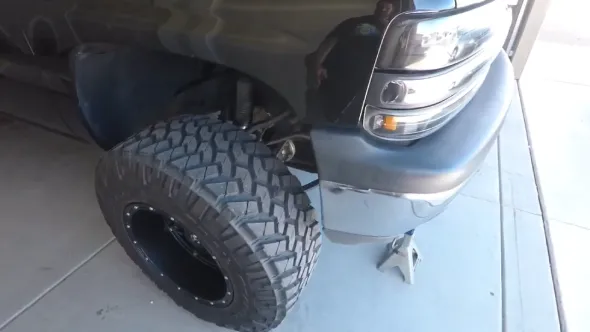
Removing a lift kit from your vehicle can have both negative and positive consequences. Before deciding to remove the kit, it is important to consider the pros and cons of doing so.
Pros of Removing a Lift Kit
- Removing a lift kit can drastically improve the fuel economy of a car or truck. The suspension system will be less stressful, and you’ll get better gas mileage.
- Lowering the center of gravity of your vehicle also increases its safety features. Turning and cornering become more stable, and evasive maneuvers are less likely to roll over.
- By removing a lift kit, you save money on shock absorbers, springs, bushings, and other suspension parts. These things may break more quickly if the ride height is lifted.
- The ride quality is better when the lift kit is removed since the tires will have better contact with the road surface. It’ll make for a smoother shift between gears and a more comfortable drive.
Cons of Removing a Lift Kit
- Taking a lift kit off lowers your ground clearance, one of the biggest complaints. Off-road terrain is harder to traverse without bottoming out, and rocks and other obstacles can damage it more quickly.
- You might also lose some of your vehicle’s towing capacity if you remove your lift kit. Short wheelbases can make it difficult to haul large items like boats and trailers.
- Vehicles without lift kits tend to have thinner tires that don’t cushion road shocks, bumps, etc., resulting in a rough ride.
- Due to the lack of height obtained from the kit removal, you may have difficulty seeing over steep inclines or down steep hillsides from inside the cabin.
Does Removing a Lift Kit Void a Car Warranty?
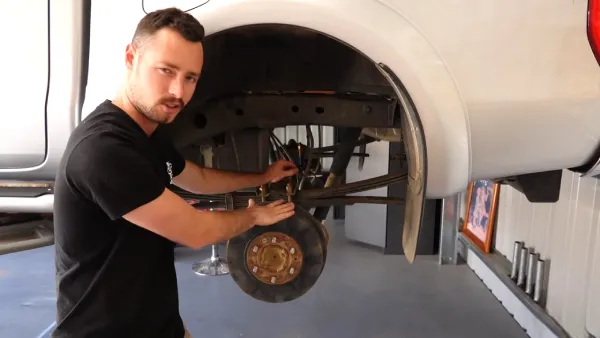
Removing a lift kit typically does not completely void the manufacturer’s warranty. Depending on the specific make and model of your car, some components may be covered under warranty even after installing a lift kit.
In contrast, if you uninstall the lift kit, it is possible that any issues with your car related to it could no longer be covered by the original warranty. It is essential to consult with your dealer or manufacturer prior to installing any kind of lift kit.
Note: It is also advisable to confirm what will be covered by your original car warranty afterward.
What’s the Life Expectancy of Lift Kits?
On average, most lift kits have an expected lifespan of 8 to 10 years depending on their quality and how well they are taken care of. Some higher-end leveling kits may last even longer if they are properly maintained.
With proper maintenance, such as regular inspection for wear and tear, rust prevention, and lubrication. Users can extend the life expectancy of their lift kit considerably beyond 10 years.
Is Removing a Lift Kit Messing Up Your Vehicle?
Removing a lift kit can cause changes to your vehicle’s suspension, steering, and tires, but it doesn’t have to lead to any long-term damage. For those who want to ensure the uninstalling process is safe and reliable, it is highly recommended to hire an experienced technician to inspect the lift kit and uninstall it properly.
This way, you can avoid any kind of risks that arise when someone does not know exactly how the lift kit was installed or which parts were used in the first place. Then you can have peace of mind knowing that returning your vehicle back down to its original shape will not create any lasting damage.
Do Removing Lift Kits Affect Steering?
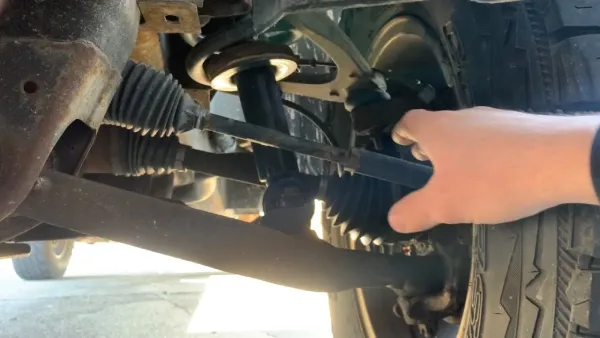
Removing a lift kit can potentially have an impact on your vehicle’s steering capabilities, depending on what type of lift kit was installed in the first place. If you had a body lift kit, then there will likely be no noticeable change in steering.
Then again, if you had a suspension lift kit that included new springs and shocks, you’ll probably notice some steering changes after removal. You may need to adjust tie rod ends or wheel alignment settings to get back to factory specifications.
Consider Every Angle Before Taking a Lift Off
Before taking the drastic step of undoing a lift kit, it’s essential to assess all factors involved. Uninstalling may have its advantages but could just as easily lead to voiding existing warranties and costing far more than expected. Take time out to contemplate if removal is truly your best option.
Besides that, don’t take your vehicle apart until you know the difficulties involved in reversing modifications and unforeseen difficulties during removal. With this information in hand, it should be much clearer whether or not removing your lift kit is right for you.
